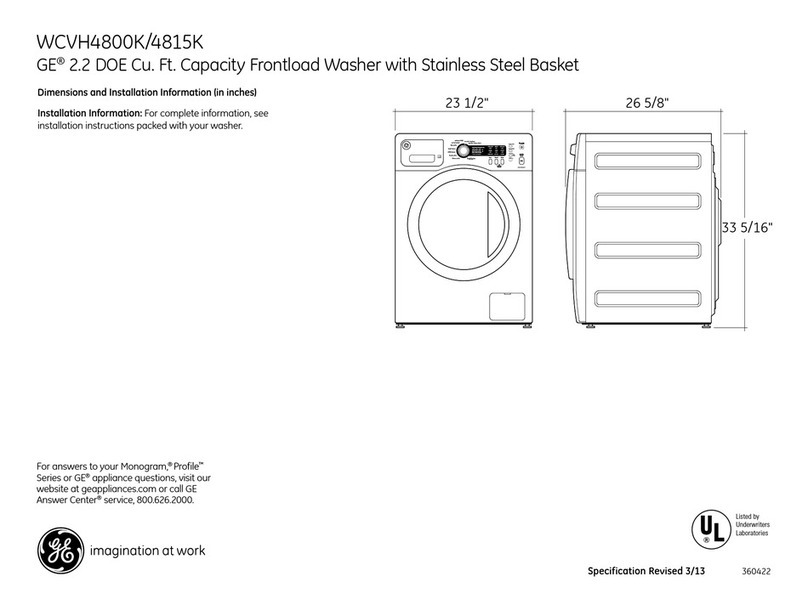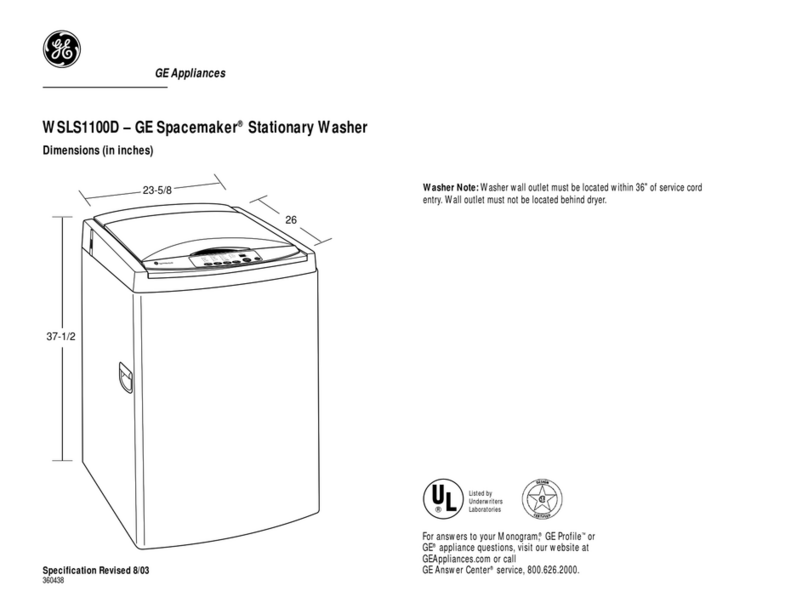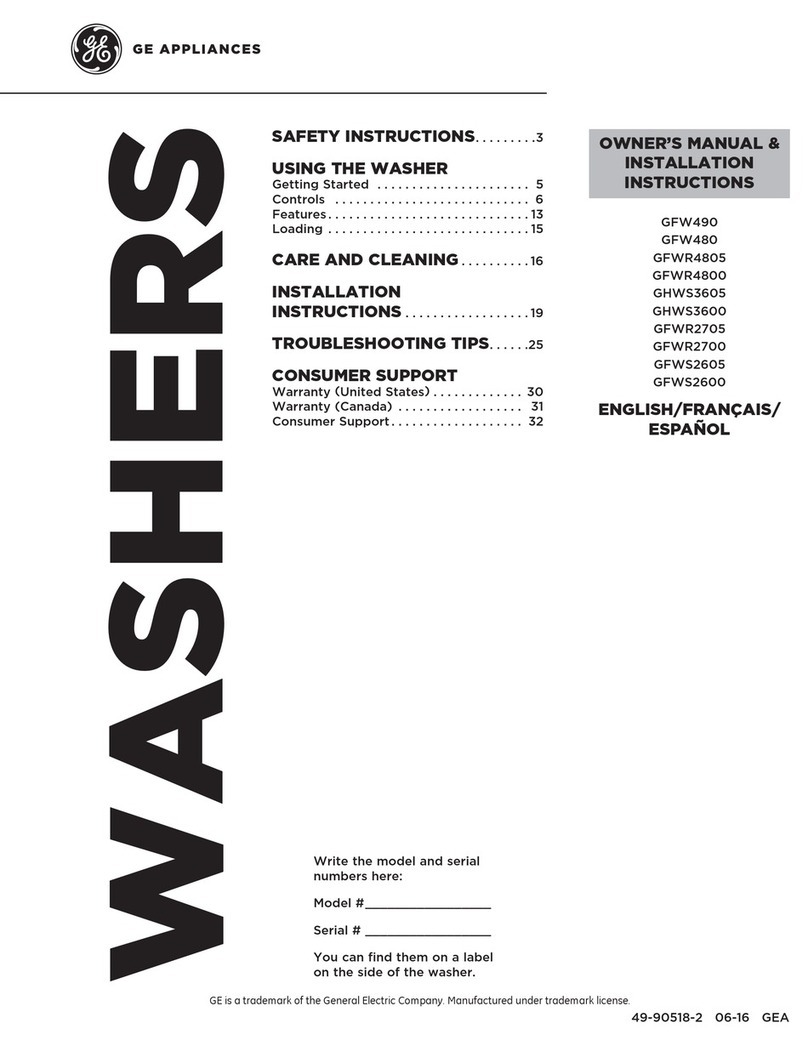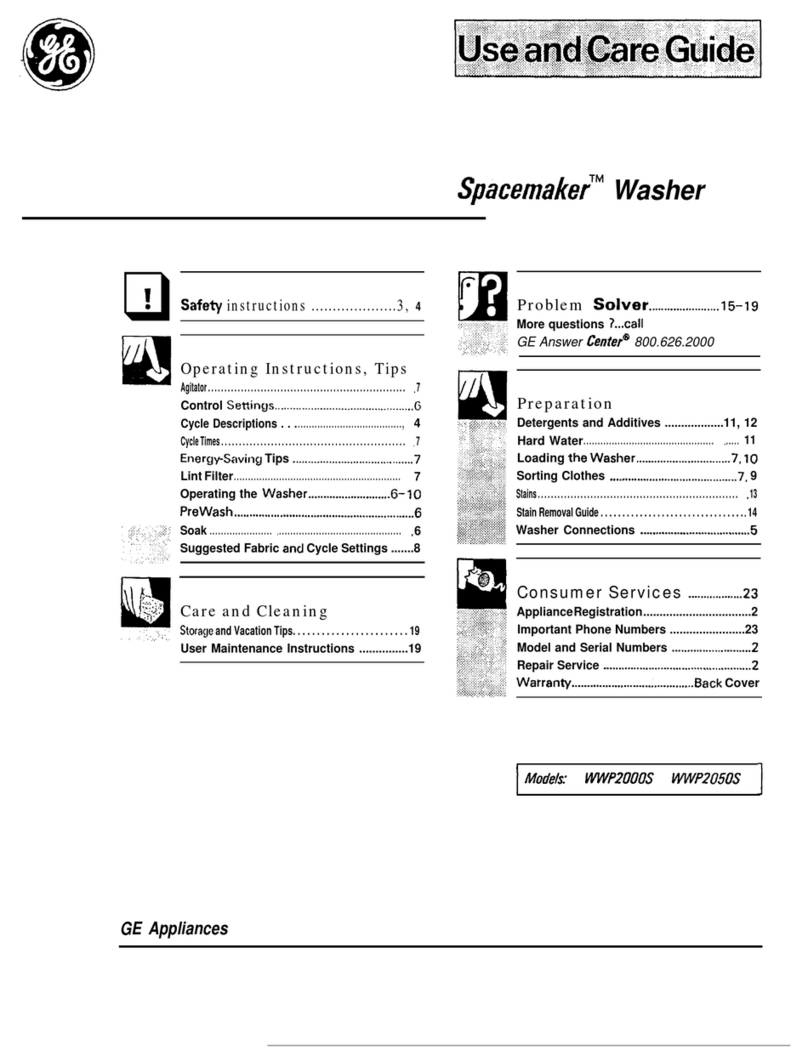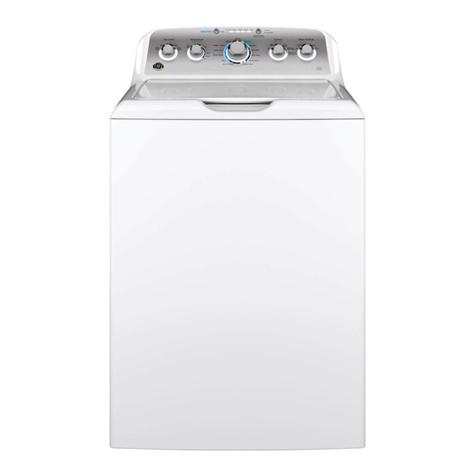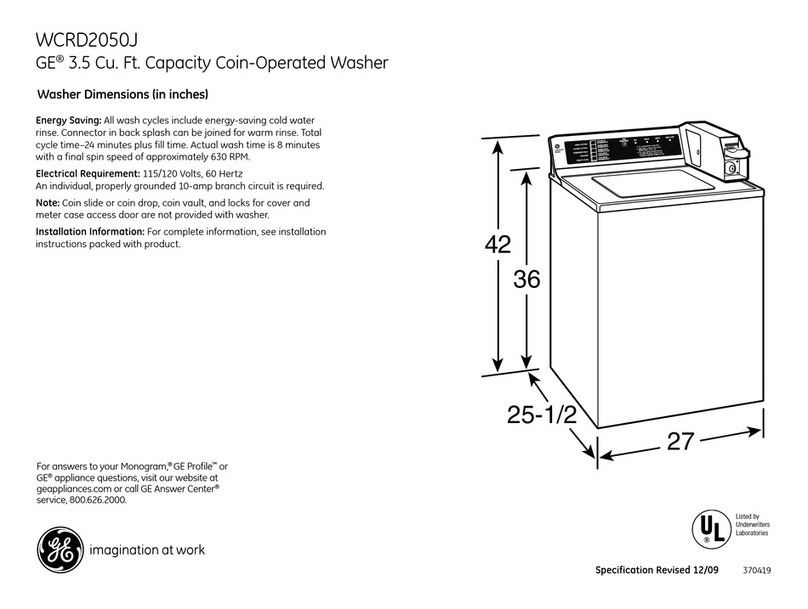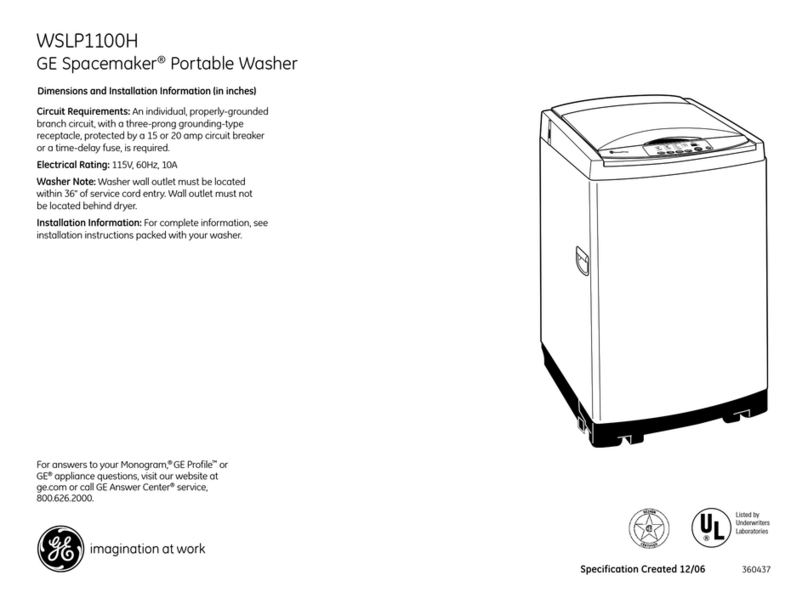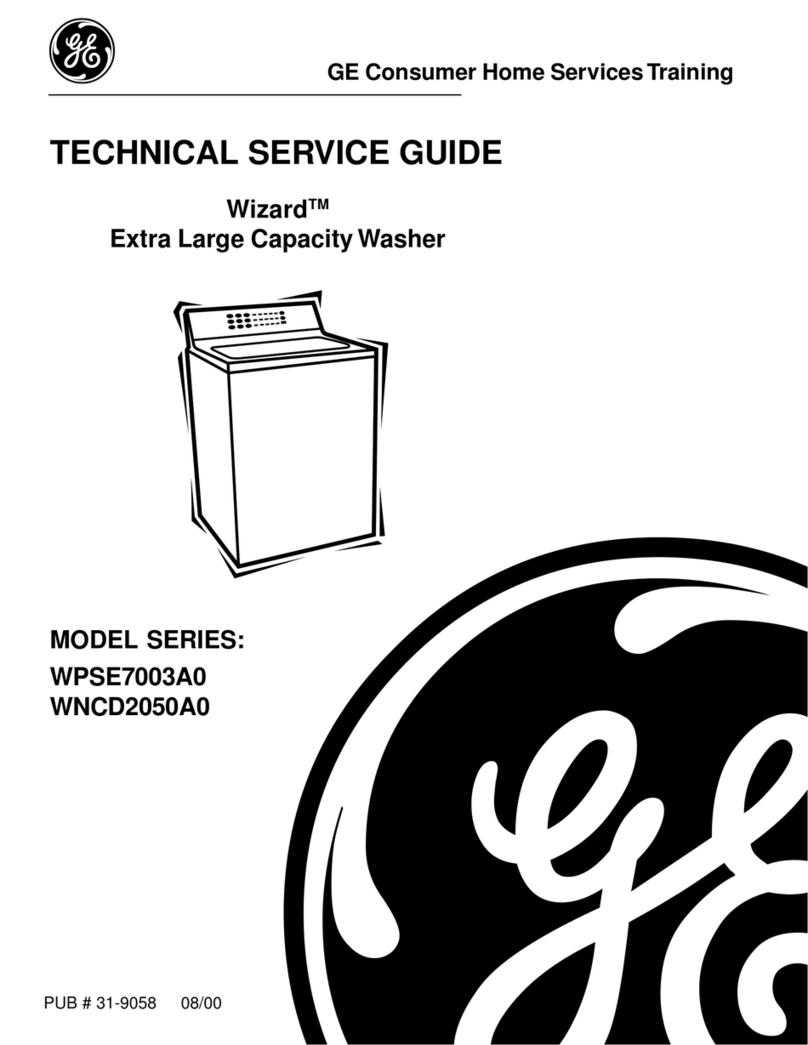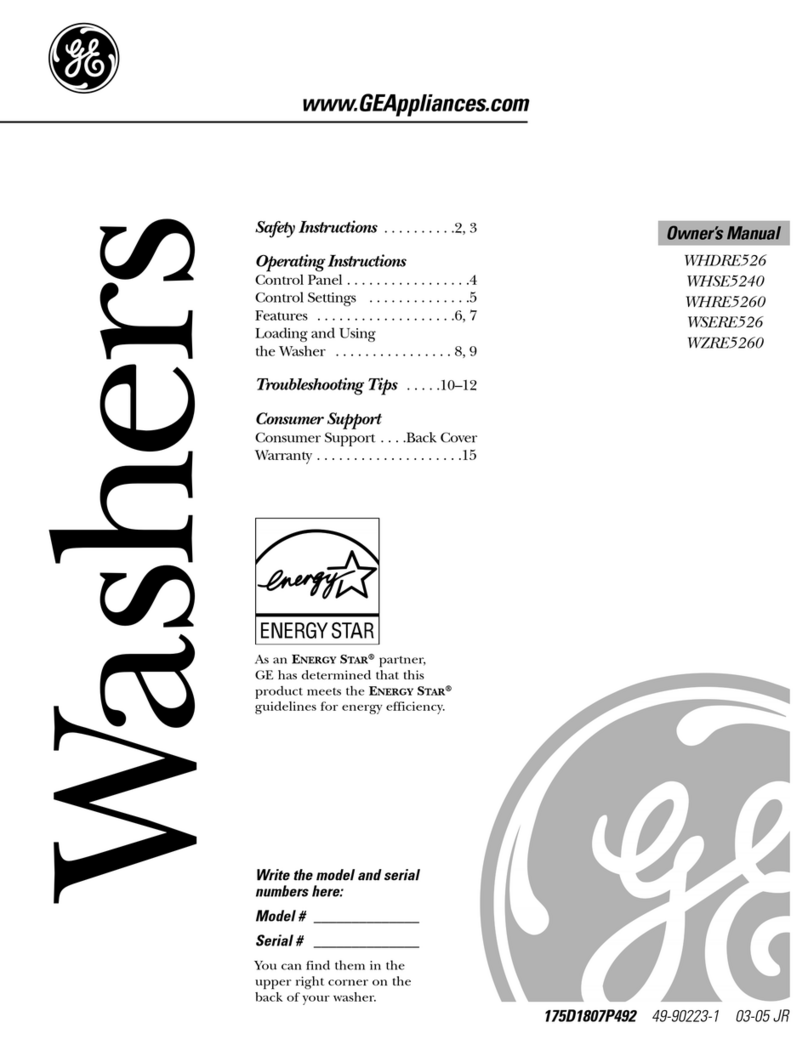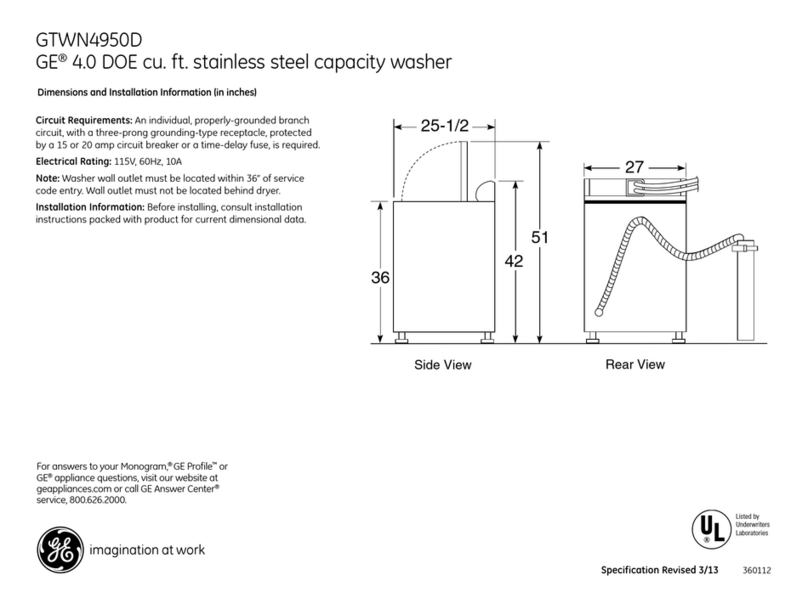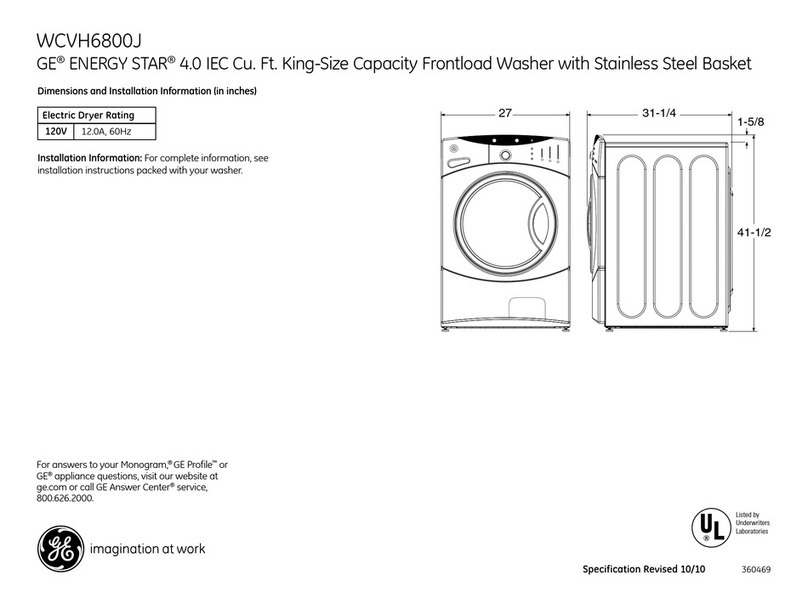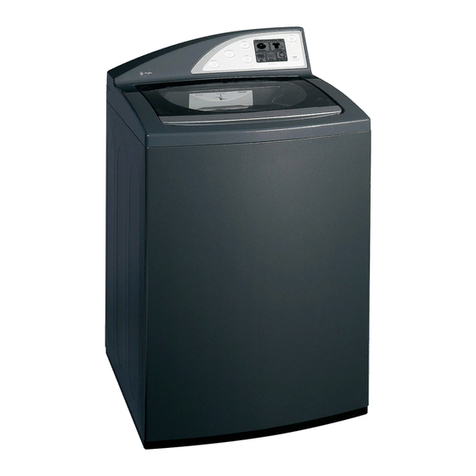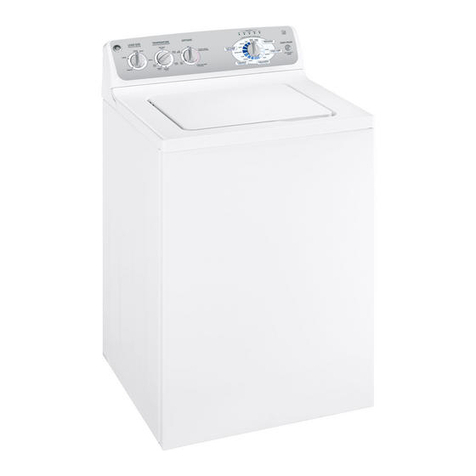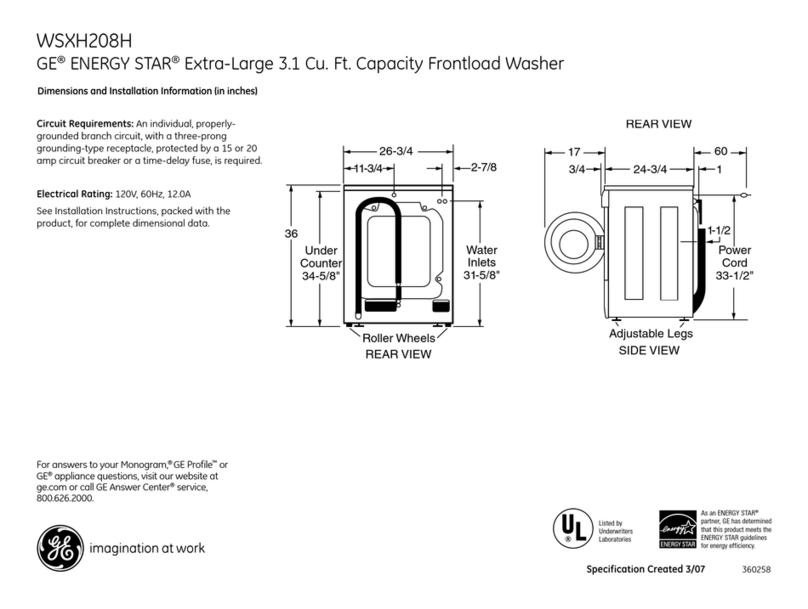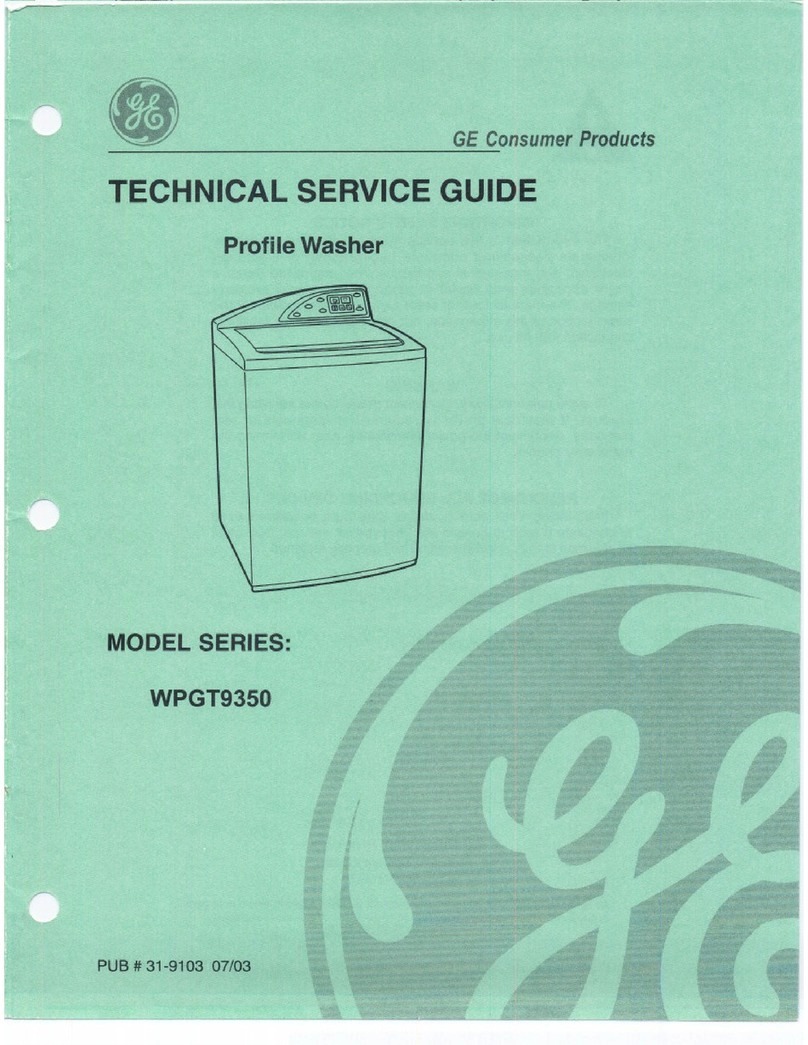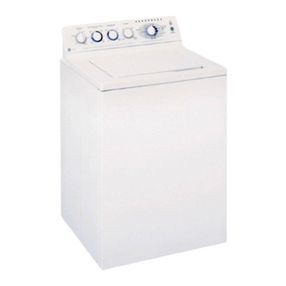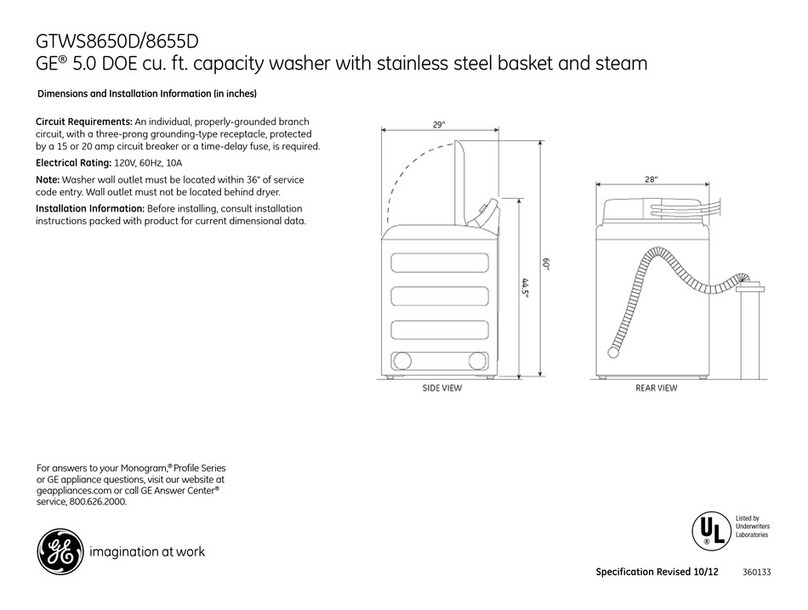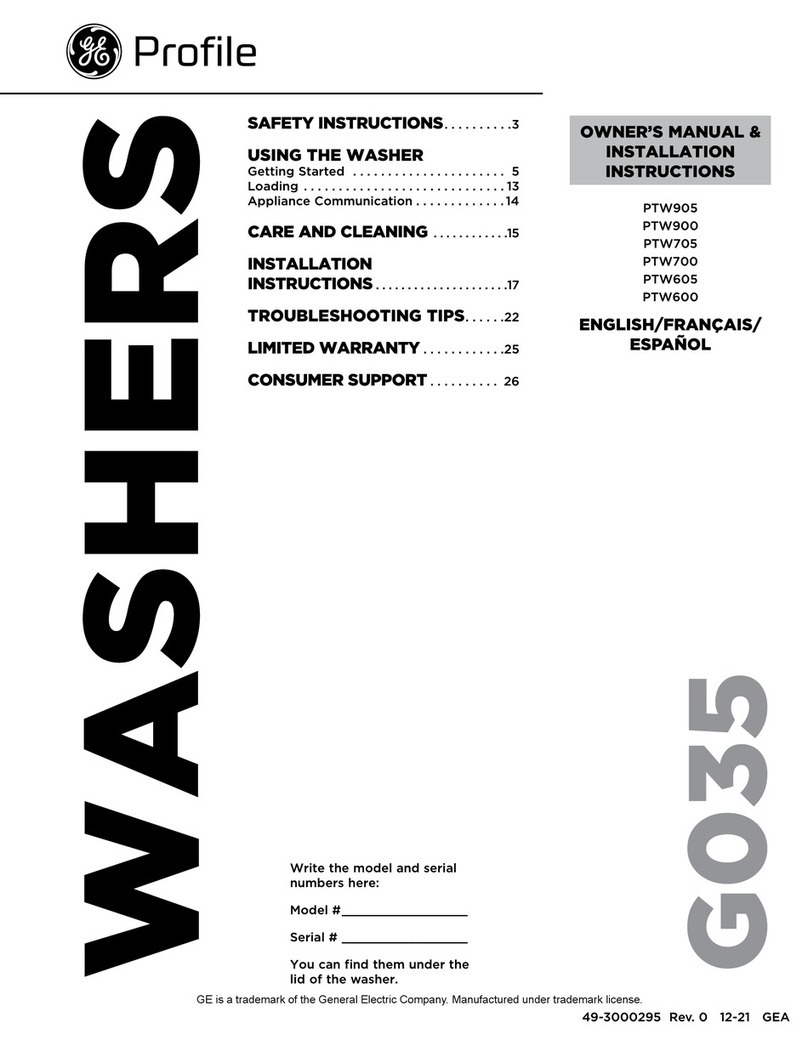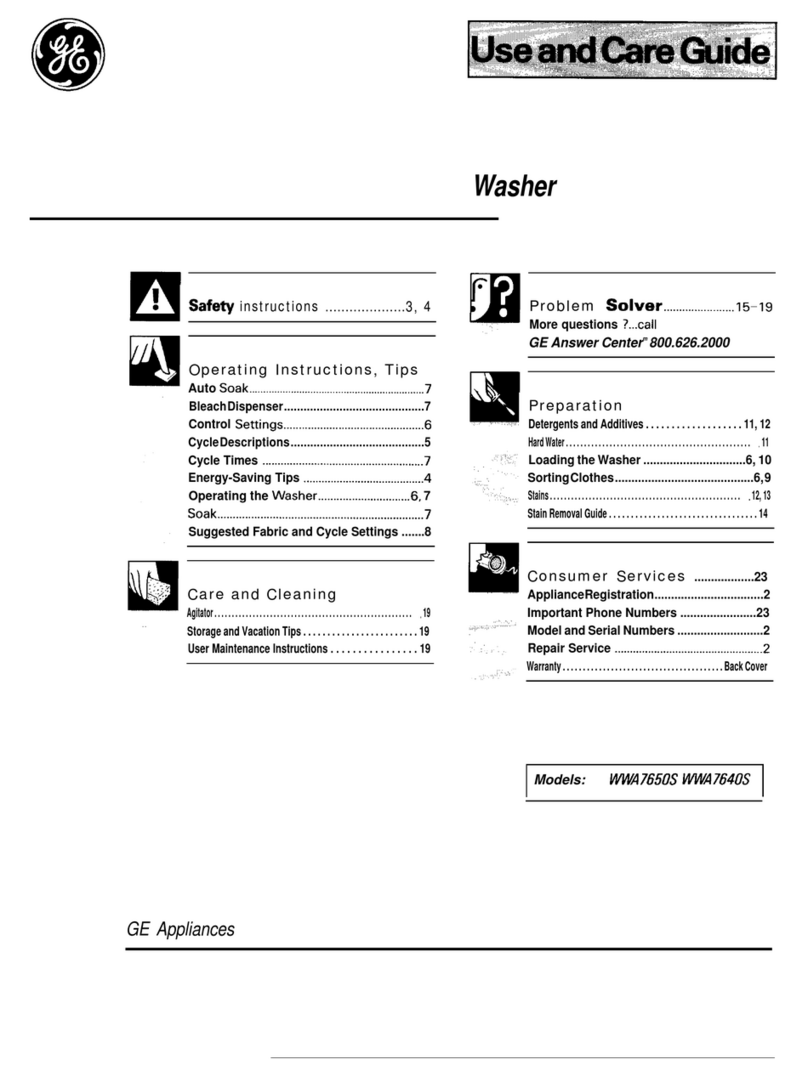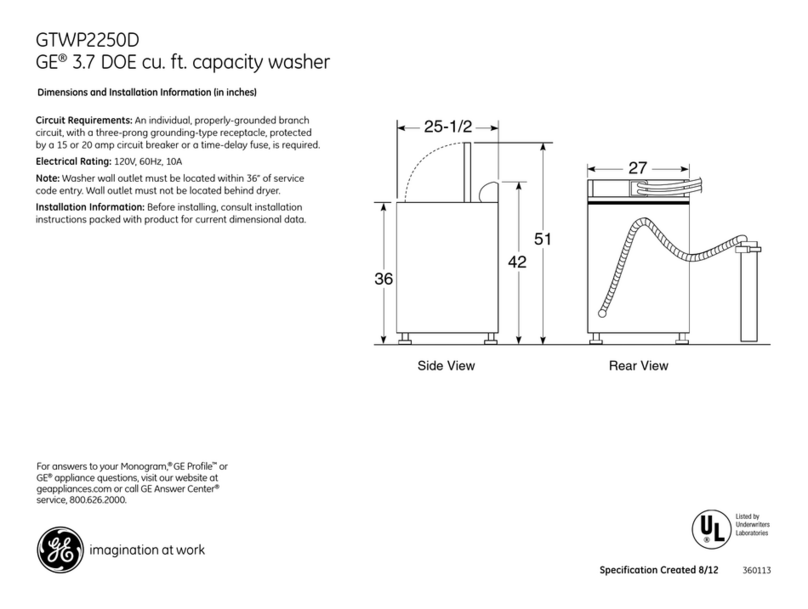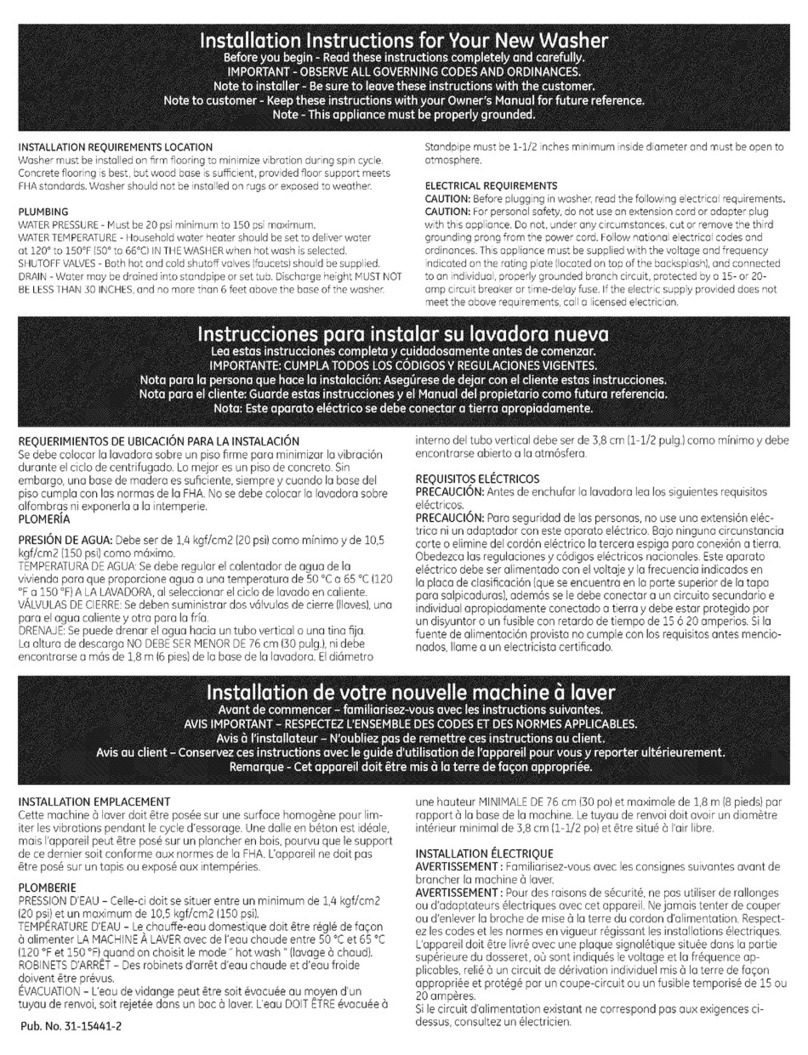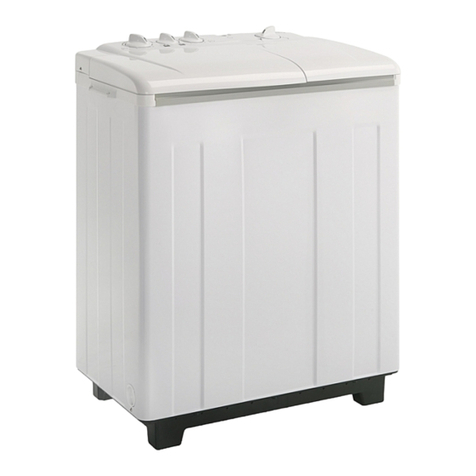IMPORTANT SAFETY INSTRUCTIONS
Read all instructions before using this appliance.
WARNING--To reduce the risk of
fire, electric shock, or injury to
persons when using your appliance,
follow basic precautions, including
the following:
s Use this appliance only for its
intended purpose as described in
this Use and Care Book.
•This washer must be properly
installed and located in accordance
with the Installation Instructions
before it is used. If youdid not
receive an Installation Instructions
sheet with your washer, you can
obtain one by contacting the service
location nearest you.
--Properly ground to conform
with all governing codes and
ordinances. Follow details in
Installation Instructions.
--Install or store where it will not
be exposed to temperatures below
freezing or exposed tothe weather.
--Connect to aproperly rated,
protected and sized power supply
circuit toavoidelectrical overload.
--Connect to adequate plumbing
and facnitiesasdescribedin
the Installation Instructions.
•Turn off water faucets when
the washer is not inuse to relieve
pressure on hoses and valves, and tc
tripp
__k orm published user-repair
_ns _t you understand
and have the skills to carry out.
Tominimize the possibility
of injury:
• Do not mix chlorine bleach with
ammonia or acids such as vinegar
and/or rust remover. Mixing can
produce a toxic gas which may
cause death.
• Do not wash or dry articles
that have been cleaned in, washed
in, soaked in, or spotted with
combustible orexplosive substances
(such as wax, paint, gasoline,
degreasers, dry-cleaning solvents,
kerosene, etc.) which may ignite
or explode.
Do not add these substances to the
wash water, and do not use these
substances around your washer
and/or dryer during operation.
WARNING--HYDROGEN GAS is
produced by the chemical action
within your water heater and the
gas can accumulate in the water
heater and/or water pipes if hot
water has not been used for a
period of two weeks or longer.
HYDROGEN GAS CANBE
EXPLOSIVE UNDER THESE
CIRCUMSTANCES. So to prevent
the possibility of damage or injury,
ifyou have not used hot water for
two weeks or more, or move into a
residence inwhich the hot water
system may not have been used for
some time, turn on a//hot water
faucets andallow them torun for
• Close supervision is necessary
if this appliance is used by or near
children. Do not allow children
to play inside, on or with this
appliance or any discarded
appliance. Dispose of discarded
appliances and shipping or
packing materials properly.
Before discarding a washer, or
removing from service, remove
the washer lid.
•Keep all laundry aids (such as
detergents, bleaches, fabric softeners,
etc.) out of the reach of children,
preferably in a locked cabinet. Observe
all warnings on container labels to
avoid personal injury.
•Keep the area around and
underneath your appliances free
from the accumulation of combustible
materials, such as lint, paper, rags,
chemicals, etc.
•Keep the floor around your
appliances clean and dry to reduce
the possibility of slipping.
• Tominimize the possibility
of electric shock, unplug this
appliance from the power supply
before attempting any maintenance
or cleaning (except the removal and
cleaning of the lint filter).
NOTE: Turning the Cycle Selector
knob to an OFF position does NOT
disconnect the appliance from the
power supply.
• Do not tamper withcontrols.
•Do not opera_ this appliance
connected tothe hot water system, if itis damaged, malfunctioning,
This will allow any hydrogen gas partially disassembled, orhas
missing orbroken parts, including
toescape. Sincethe gas is ......
flammable, do not smoke or use a _mc°m°rpmg"
_0_ orapp "liance .... *Neyerc_on or s_don _e
• - • ' • 41_ _ *
_*_ mto,_r while _,_ _r_n_ _fiberglass _cl_ m
g_ _6thes;_p;_ result frofia_e _g p_cles
in the Cycle .Seflectorknob to _ that may be picked upby clothing
"STOP" position, then Waituntil during subsequent w_asheruse.
the machine has completely
stopped before opening the lid. I¢continuednextpag e)
3
